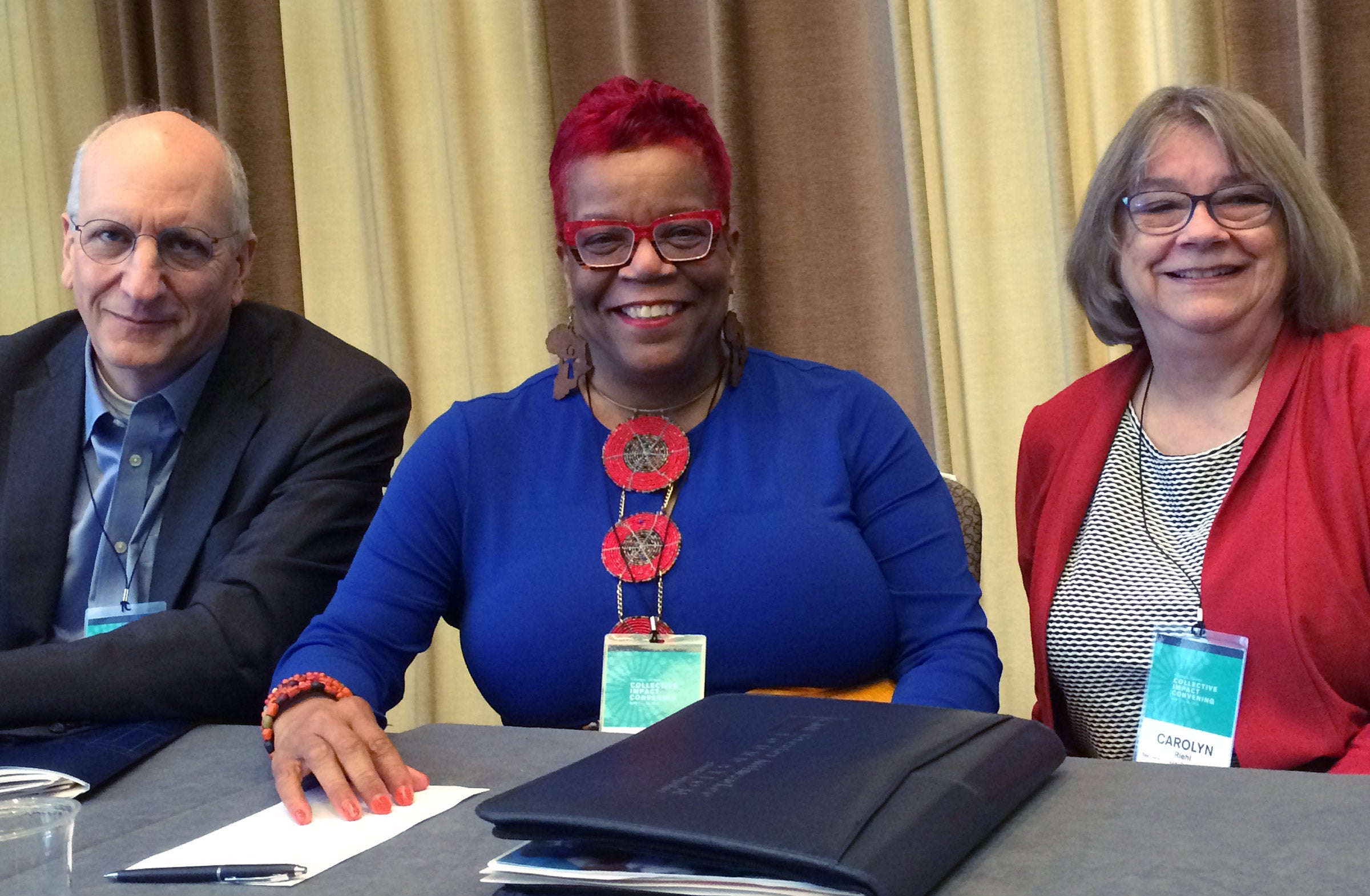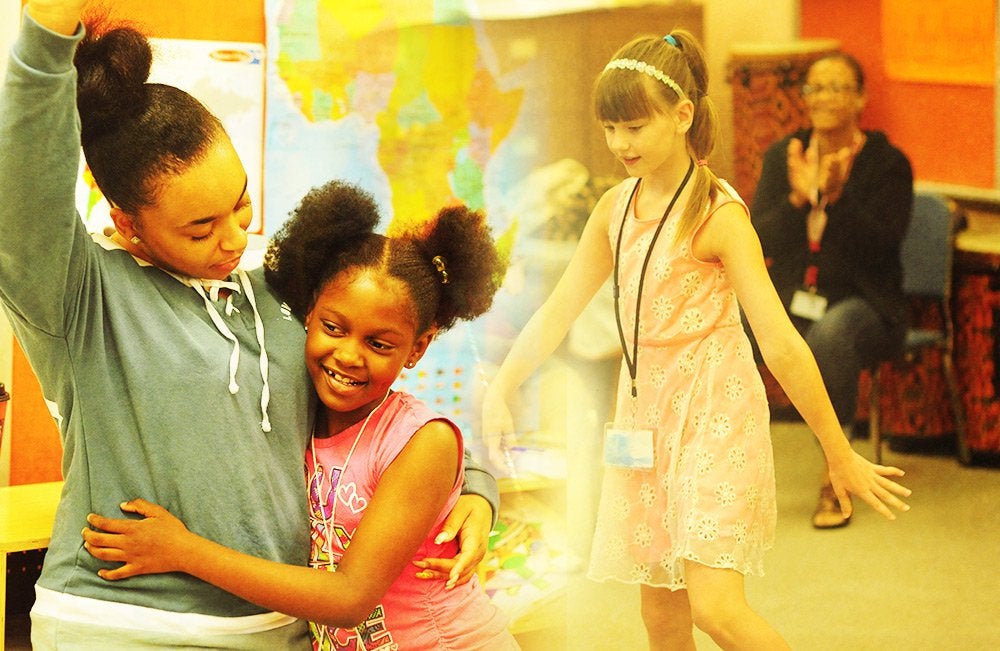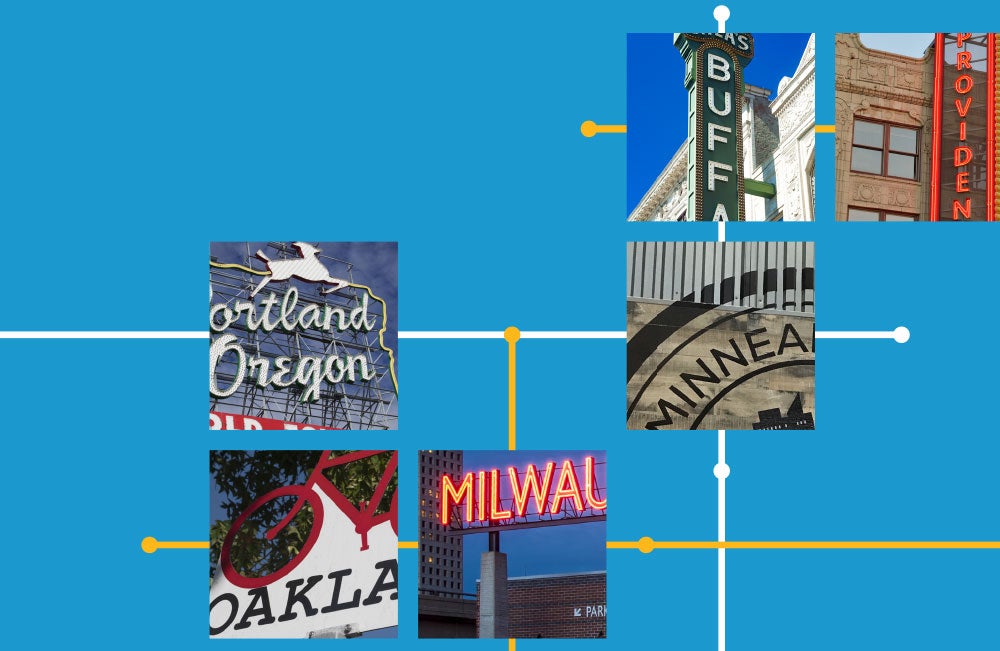Complex social issues must be solved with a comprehensive approach. That’s the idea driving a recent surge in cross-sector collaborations anchored in communities and aimed at improving local educational outcomes, especially for low-income students. In one study, researchers from Teachers College at Columbia University found 182 such place-based collaborations nationwide working to improve students’ readiness for and success in early childhood, K-12, and post-secondary education.
A companion study (also from Teachers College), Building Impact: A Closer Look at Local Cross-Sector Collaborations for Education, now examines eight collaborations, which often include philanthropies, school districts, businesses, higher education and social service agencies. Prior to the study's release, Carolyn Riehl, an associate professor at Teachers College, presented a few of the findings at a Collective Impact Convening in Chicago. She was joined by Will Miller, president of The Wallace Foundation, and Danae Davis, executive director of Milwaukee Succeeds, one of the collaborations featured in the study.

While cross-sector collaborations were often overly optimistic about their initial goals, there’s reason for “cautious optimism” about their future, Riehl told a crowd gathered at the Hyatt Regency Chicago. They will likely take “more time than the usual window of opportunity social programs are given for making an impact,” she said, but they are bringing together partners who have rarely cooperated before, soothing local political tensions and making steady progress.
Here we highlight some key questions posed by the panel and preview findings from the upcoming report, which Miller called, “one of the most in-depth studies of the cross-sector collaboration approach.”
Can local collaborations mount comprehensive change?
Several of the eight collaborations studied set out to provide supports from early childhood through post-secondary education, but only one—Say Yes Buffalo—has come close to meeting that promise so far, the study found. That group convinced the city to provide “a broad menu of wraparound support services” for students, Riehl said. “The ‘carrot’ that enticed the city to commit was that Say Yes promised college scholarships for all eligible public school graduates in the city. The stick was that if the city reneged on the support services, there would be no more scholarships.”
Other collaborations studied had expanded services on a more gradual and limited scale and not yet met their goals. Obstacles included getting participants to agree on strategies and a shortage of funding and organizational capacity. Still, the vision to provide comprehensive services “seems to give people a sense of purpose and significance, a horizon to reach for,” she noted.
How do collaborations address education?
“The politics and pragmatics of collaborations working closely with school districts turned out to be much more complicated than we might imagine,” Riehl said to appreciative laughter. The initiatives studied often supported instructional improvement by launching afterschool programs or by backing a district’s strategic plan, but appropriately refrained from trying to drive instructional reforms.
But districts also were often hesitant to work closely with cross-sector collaborations, the study found. One reason, Riehl said, seemed to be a desire to avoid expensive, complicated and politically challenging work. Pressure to focus on immediate testing and accountability concerns may have played a role. Districts also commonly want to be viewed as the “source and motivator” of their own improvement, she noted, and working with an external collaboration might imply that the district couldn’t manage improvement on its own.
Collaborations did make one significant contribution to core education reform, the study found: they calmed entrenched interests and tensions that often surround urban school systems. They reduced “the sense of frustration and urgency,” Riehl said, and created “an environment more conducive to school system stability and productivity. This may not be the kind of ambitious change implied in the rhetoric of collective impact, but it did count for something in local contexts.”
How do collaborations address equity in their systems?
Most collaborations were motivated by the desire to end disparities in academic performance for students from low-income backgrounds and students of color. Yet at their start, they refrained from naming the problem directly or addressing other inequities that affect education, such as housing, employment, community safety and services. But over time, collaborations have become more explicit and intentional about equity, the study found. Researchers attributed that in part to the influence of national networks supporting collaboratives and growing national attention to class and race disparities, especially in the wake of the 2016 presidential campaign.
Still, collaborations generally continued to be made up of community leaders, “often without involving the people most impacted by inequity and poor education,” she observed. The original idea was to involve “powerful decision-makers in systemwide change” but that approach, she said, might ultimately fail to galvanize widespread support, including from those they intend to serve.
What can influence sustainability in a collaboration?
“Goodwill and enthusiasm for the idea of collective impact gave these initiatives their start and seem to be boosting them along,” Riehl reported. Other factors aiding sustainability include effective “backbone” organizations to manage the collaboration, leaders with strong interpersonal skills, and national networks providing technical assistance, networking, strategies, funding and other supports.
Davis of Milwaukee Succeeds, which belongs to the national StriveTogether network, said that her collaborative has sustained itself since 2011 despite launching amid local education politics “that had been toxic for 25 years.” The city’s education landscape included a high-poverty school system struggling to raise student achievement, a large number of independent charter schools and private (mostly religious) schools enrolling students with vouchers.
Keeping all three education systems working together through the collaborative, she said, “is no small feat.”
She attributes their commitment to a shared desire to benefit children, a refusal to allow the collaborative’s forum “to be hijacked for political reasons,” such as elections, and insistence among the five major foundations funding the work that the three education systems show evidence of partnership. “That sends the message that you want to stay in the tent,” she said.
Early on, the collaboration also realized that it would get more traction if it placed school system priorities at the forefront, she added.
While Milwaukee Succeeds had to scale back on its ambition to tackle the whole “cradle to career spectrum” at once, it has had some wins, Davis said. After a technology manufacturing company promised the county 13,000 jobs, the collaborative helped to convene 18 local two- and four-year colleges and universities to come up with a workforce development plan that included raising college enrollment and completion.
“That was a huge deal,” she said. “I don’t know how many of you have worked with higher ed—it’s worse than the Titanic in terms of turning it around. And they are moving with great speed.”
In another win, they convinced state legislators to fund a statewide expansion of a tutoring program for early readers that the collaborative had brought to Milwaukee. Business partners in the collaborative made the request, backed by data, she said, and philanthropic partners promised funding for a quarter of the cost.
What does the immediate future look like for collaborations?
Davis said she regrets that the collaborative neglected grassroots involvement at the start and so is not well-known in the wider community. Eight years in, they are working to forge those relationships. An important step, she said, will be finding ways to support grassroots agendas. To build community buy-in, she advised “don’t bring them to your table, go to their table.”
Miller added that in his own personal experience, he’s found that a cross-sector collaboration needs support both from elites to bring resources to the table and from grassroots participation to give the effort legitimacy. Some collaborations he’s participated in, he said, owed their success in large part to “a lengthy, exhaustive process” for identifying where the interests of each overlapped.
Riehl and Davis agreed that sustaining cross-sector collaboration long-term will depend on the skill of “backbone” organizations like Milwaukee Succeeds to forge and manage diverse relationships and become more representative of the communities they serve.
“This process takes a long time,” Riehl said. “People get bored and stop coming, they argue, there’s conflict, factions develop, so it really takes a steady hand to get everyone rowing in the same direction.”
But, she said, “we’ve seen lovely instances where partner agencies have changed their strategies because they want to be part of the action.”
To learn more about the Teachers College study of cross-sector collaborations in education, see Putting Collective Impact Into Context and Collective Impact and the New Generation of Cross-Sector Collaborations for Education.




